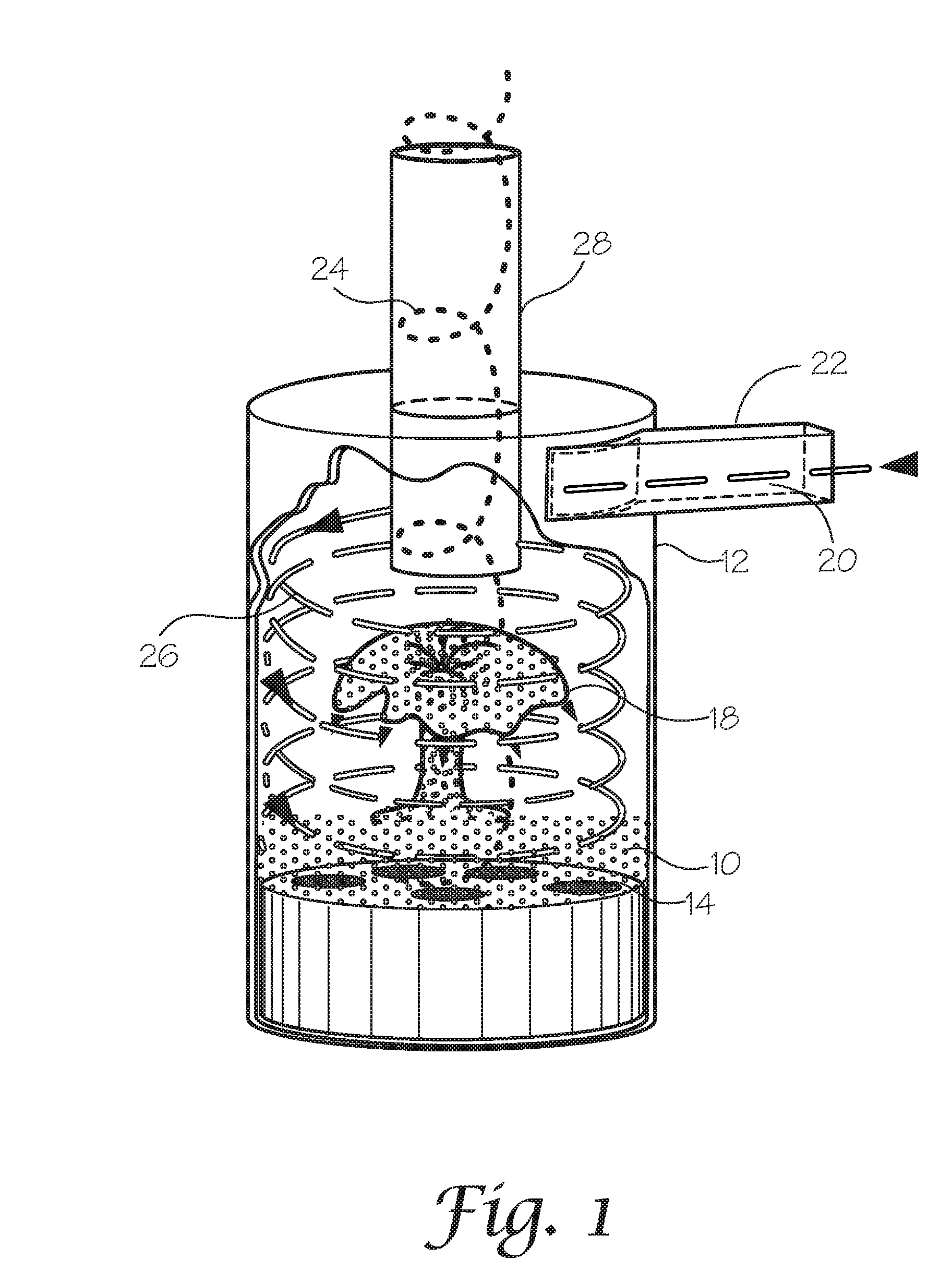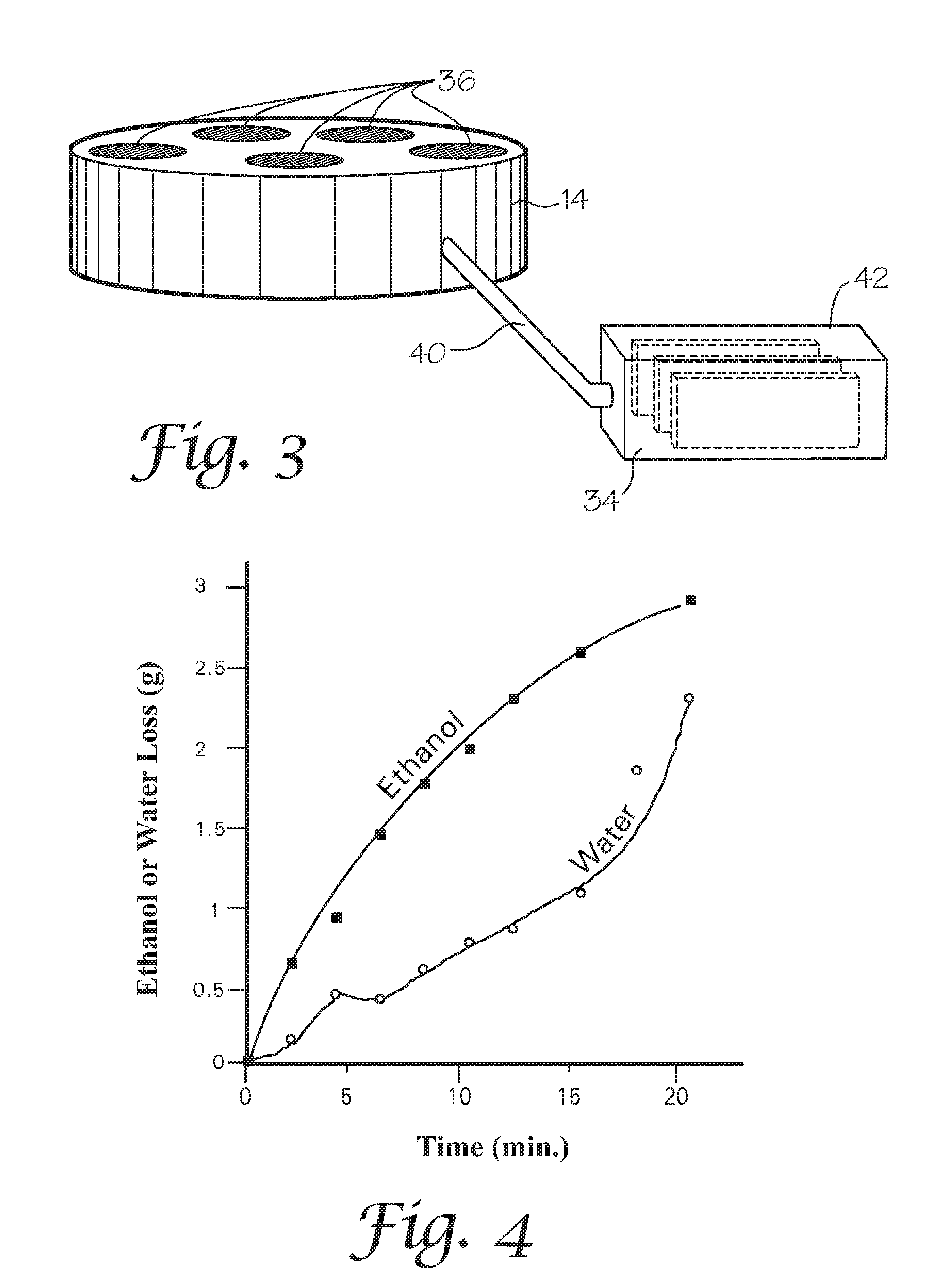Method and device for separation of liquid mixtures without thermal distillation
a liquid mixture and thermal distillation technology, applied in the field of liquid mixture separation, can solve the problems of creating enormous energy and pressure, and achieve the effects of high energy efficiency, high energy efficiency, and low energy consumption
- Summary
- Abstract
- Description
- Claims
- Application Information
AI Technical Summary
Benefits of technology
Problems solved by technology
Method used
Image
Examples
Embodiment Construction
[0029]The present invention is applicable to generally liquid mixtures comprising two or more miscible or immiscible components. However, the invention is particularly applicable to the industrial process for separation of miscible liquid mixtures, and, in particular, applicable to producing ethanol from an ethanol and water mixture during a fermentation process using an ultrasonic atomization process. The process provides separation of a volatile liquid component, such as ethanol, at an industrial scale of several liters per minute using large scale ultrasonic atomizer-extractors. The present invention is not restricted to application to ethanol mixtures but may be applied to the separation of any multi-component liquids with differing volatilities. The particular processes for removing ethanol from liquid fermentation mixtures will be discussed herein as an example of a particularly beneficial application of the invention.
[0030]The process technology provides for the online remova...
PUM
| Property | Measurement | Unit |
|---|---|---|
| temperature | aaaaa | aaaaa |
| electrostatic voltage | aaaaa | aaaaa |
| frequency | aaaaa | aaaaa |
Abstract
Description
Claims
Application Information
 Login to View More
Login to View More - R&D
- Intellectual Property
- Life Sciences
- Materials
- Tech Scout
- Unparalleled Data Quality
- Higher Quality Content
- 60% Fewer Hallucinations
Browse by: Latest US Patents, China's latest patents, Technical Efficacy Thesaurus, Application Domain, Technology Topic, Popular Technical Reports.
© 2025 PatSnap. All rights reserved.Legal|Privacy policy|Modern Slavery Act Transparency Statement|Sitemap|About US| Contact US: help@patsnap.com



